Thephysicsteacher.ie
This resource aims
to show science in everyday life and expose the students to science in an applied manner. It is hoped that
HARMACHEMICAL IRELAND
DIRECTOR MATT MORAN
onfederation House 84/86 Lower Baggot Street Dublin 2
ASSISTANT DIRECTOR MARIAN BYRON
SENIOR EXECUTIVE NESSA MOYLES
ELEPHONE + 353 1 605 1584 FAX + 353 1 638 1584
E-MAIL
[email protected] www.pharmachemicalireland.ie
EDUCATION EXECUTIVE JAMES RING
TECHNICAL AFFAIRS EXECUTIVE AOIFE CLARKE
A business association within IBEC / the Irish Business and Employers Confederation
SECRETARIAT AND EXECUTIVE SUPPORT ALANNA MCGUINNESS
science will be viewed in a more interesting light as many students see it as a boring and difficult subject.
Table of Contents
Chemistry
Greenhouse Effect
HARMACHEMICAL IRELAND
DIRECTOR MATT MORAN
onfederation House 84/86 Lower Baggot Street Dublin 2
ASSISTANT DIRECTOR MARIAN BYRON
SENIOR EXECUTIVE NESSA MOYLES
ELEPHONE + 353 1 605 1584 FAX + 353 1 638 1584
E-MAIL
[email protected] www.pharmachemicalireland.ie
EDUCATION EXECUTIVE JAMES RING
TECHNICAL AFFAIRS EXECUTIVE AOIFE CLARKE
A business association within IBEC / the Irish Business and Employers Confederation
SECRETARIAT AND EXECUTIVE SUPPORT ALANNA MCGUINNESS
What is HIV Really All About
What is HIV?
HIV stands for Human Immunodeficiency Virus. This virus infects a number of
different cells of the human immune system. The most susceptible cell is a type of white
blood cell called the CD4 T-lymphocyte, which plays a very important part in the
functioning of the immune system. HIV slowly and steadily destroys these immune cells
until the body is left defenceless against all and every disease. When the count of CD4
cells goes below a certain number (200 cells per cubic millimetre of blood), the person is
said to have progressed to the AIDS stage, the final stage before death. AIDS stands for
Acquired Immunodeficiency Syndrome. The word syndrome specifies that it is a
condition or stage of infection and not a specific disease. The word "acquired" specifies
that this syndrome is not genetic (hereditary) but acquired by an individual as a
consequence of infection with HIV. Once HIV enters the human body, it slowly and
steadily destroys the CD4 immune cells until the body is left defenceless against all and
every disease. When the count of CD4 cells goes below a certain number (200 cells per
cubic millimetre of blood), the person is said to have progressed to the AIDS stage. It is
the final stage of HIV infection before death.
The phrase HIV + is used to describe people who are infected by HIV, therefore
HIV - is used to describe all those people who have not got HIV. HIV is considered a
HARMACHEMICAL IRELAND
DIRECTOR MATT MORAN
onfederation House 84/86 Lower Baggot Street Dublin 2
ASSISTANT DIRECTOR MARIAN BYRON
SENIOR EXECUTIVE NESSA MOYLES
ELEPHONE + 353 1 605 1584 FAX + 353 1 638 1584
E-MAIL
[email protected] www.pharmachemicalireland.ie
EDUCATION EXECUTIVE JAMES RING
TECHNICAL AFFAIRS EXECUTIVE AOIFE CLARKE
A business association within IBEC / the Irish Business and Employers Confederation
SECRETARIAT AND EXECUTIVE SUPPORT ALANNA MCGUINNESS

new disease as it has not been found in records until recent times so not a huge amount is
How did it start?
It is thought that HIV originated in Central Africa as far back as the 1930's. A
virus called SIVcpz is found in Chimpanzees in Africa, and this is the closest virus to
HIV. The virus entered the human system very easily, when the chimps were hunted. The
chimps were killed in a very bloody manner and were eaten raw, sometimes the blood
was even drank. These people then became infected by the SIVcpz, however this did not
cause the people to get sick. Unfortunately the problem started when the virus mutated
Figure 1: Chimpanzee from central Africa
For many years HIV remained confined to small areas of central Africa, however from
the 1960's when tourism exploded, air travel became easy and other factors, the disease
began to spread rapidly around the world. It is estimated that to date around 25 million
people have died of the infection worldwide. Why didn't HIV originate earlier? It may
have but to become the epidemic we see today three factors came together, these are, 1.
HARMACHEMICAL IRELAND
DIRECTOR MATT MORAN
onfederation House 84/86 Lower Baggot Street Dublin 2
ASSISTANT DIRECTOR MARIAN BYRON
SENIOR EXECUTIVE NESSA MOYLES
ELEPHONE + 353 1 605 1584 FAX + 353 1 638 1584
E-MAIL [email protected] www.pharmachemicalireland.ie
EDUCATION EXECUTIVE JAMES RING
TECHNICAL AFFAIRS EXECUTIVE AOIFE CLARKE
A business association within IBEC / the Irish Business and Employers Confederation SECRETARIAT AND EXECUTIVE SUPPORT ALANNA MCGUINNESS
the introduction of SIVcpz into humans, 2. it's mutation to HIV and 3. the spread of the
infection from humans to humans.
What is a retrovirus?
The genes of most living things, including humans, are made of DNA. The DNA exists as
a sequence of a code that can be read like a book. In the cell the code is read to make
RNA which is then used as the code for the construction of proteins. In other words, the
flow of genetic information in the cell is usually from DNA to RNA to protein.
The HIV virus, on the other hand, has its genetic material made from RNA. It has to
insert its genetic code into that of the host cell in order to replicate. In order to achieve
this it must first make a DNA copy so that it is compatible with the DNA of the host cell.
DNA is then made using the code of the RNA. Since this is the opposite of the usual case
the viruses that do this are called retroviruses.
How is HIV transmitted?
HIV is spread by sexual contact with an infected person, by sharing needles and/or syringes
(primarily for drug injection) with someone who is infected, or, less commonly (and now very rarely in
countries where blood is screened for HIV antibodies), through transfusions of infected blood or blood
clotting factors. Babies born to HIV-infected women may become infected before or during birth or
through breast-feeding after birth.
Some people fear that HIV might be transmitted in other ways; however, no scientific evidence to
support any of these fears has been found. If HIV were being transmitted through other routes (such as
through air, water, or insects), the pattern of reported AIDS cases would be much different from what has
been observed. For example, if mosquitoes could transmit HIV infection, many more young children and
preadolescents would have been diagnosed with AIDS.
HIV does not survive well in the environment. HIV is found in varying concentrations or amounts
HARMACHEMICAL IRELAND
DIRECTOR MATT MORAN
onfederation House 84/86 Lower Baggot Street Dublin 2
ASSISTANT DIRECTOR MARIAN BYRON
SENIOR EXECUTIVE NESSA MOYLES
ELEPHONE + 353 1 605 1584 FAX + 353 1 638 1584
E-MAIL [email protected] www.pharmachemicalireland.ie
EDUCATION EXECUTIVE JAMES RING
TECHNICAL AFFAIRS EXECUTIVE AOIFE CLARKE
A business association within IBEC / the Irish Business and Employers Confederation SECRETARIAT AND EXECUTIVE SUPPORT ALANNA MCGUINNESS
in blood, semen, vaginal fluid, breast milk, saliva, and tears. No one has been identified as infected with
HIV due to contact with an environmental surface. Additionally, HIV is unable to reproduce outside its
living host (unlike many bacteria or fungi, which may do so under suitable conditions), except under
laboratory conditions, therefore, it does not spread or maintain infectiousness outside its host.
Figure 2: Diagram of HIV virus
What are the symptoms of HIV?
The only way to determine for sure whether you are infected is to be tested for
HIV infection. You cannot rely on symptoms to know whether or not you are infected
with HIV. Many people who are infected with HIV do not have any symptoms at all for
The following may be warning signs of infection with HIV: ·
• rapid weight loss
• recurring fever or profuse night sweats
• profound and unexplained fatigue
• swollen lymph glands in the armpits, groin, or neck
• diarrhoea that lasts for more than a week
• white spots or unusual blemishes on the tongue, in the mouth, or in the throat
HARMACHEMICAL IRELAND
DIRECTOR MATT MORAN
onfederation House 84/86 Lower Baggot Street Dublin 2
ASSISTANT DIRECTOR MARIAN BYRON
SENIOR EXECUTIVE NESSA MOYLES
ELEPHONE + 353 1 605 1584 FAX + 353 1 638 1584
E-MAIL [email protected] www.pharmachemicalireland.ie
EDUCATION EXECUTIVE JAMES RING
TECHNICAL AFFAIRS EXECUTIVE AOIFE CLARKE
A business association within IBEC / the Irish Business and Employers Confederation SECRETARIAT AND EXECUTIVE SUPPORT ALANNA MCGUINNESS
• red, brown, pink, or purplish blotches on or under the skin or inside the mouth, nose, or
• memory loss, depression, and other neurological disorders
However, no one should assume they are infected if they have any of these symptoms.
Each of these symptoms can be related to other illnesses.
How do you to treat HIV/AIDS?
When AIDS first surfaced in the United States, no drugs were available to combat
the underlying immune deficiency and few treatments existed for the opportunistic
diseases that resulted. Over the past 10 years, however, therapies have been developed to
fight both HIV infection and its associated infections and cancers.
The Food and Drug Administration has approved a number of drugs for the treatment of HIV
infection. The first group of drugs used to treat HIV infection, called nucleoside analog reverse
transcriptase inhibitors (NRTIs), interrupt an early stage of virus replication. Included in this class of drugs
are zidovudine (also known as AZT), zalcitabine (ddC), didanosine (ddI), stavudine (D4T), lamivudine
(3TC) and abacavir succinate. These drugs may slow the spread of HIV in the body and delay the onset of
opportunistic infections. Importantly, they do not prevent transmission of HIV to other individuals. Non-
nucleoside reverse transcriptase inhibitors (NNRTIs) such as delavirdine, nevirapine and efavirenz are also
available for use in combination with other antiretroviral drugs.
A third class of anti-HIV drugs, called protease inhibitors, interrupts virus replication at a later
step in its life cycle. They include ritonavir, saquinivir, indinavir and nelfinavir. Because HIV can become
resistant to each class of drugs, combination treatment using both is necessary to effectively suppress the
HARMACHEMICAL IRELAND
DIRECTOR MATT MORAN
onfederation House 84/86 Lower Baggot Street Dublin 2
ASSISTANT DIRECTOR MARIAN BYRON
SENIOR EXECUTIVE NESSA MOYLES
ELEPHONE + 353 1 605 1584 FAX + 353 1 638 1584
E-MAIL [email protected] www.pharmachemicalireland.ie
EDUCATION EXECUTIVE JAMES RING
TECHNICAL AFFAIRS EXECUTIVE AOIFE CLARKE
A business association within IBEC / the Irish Business and Employers Confederation SECRETARIAT AND EXECUTIVE SUPPORT ALANNA MCGUINNESS
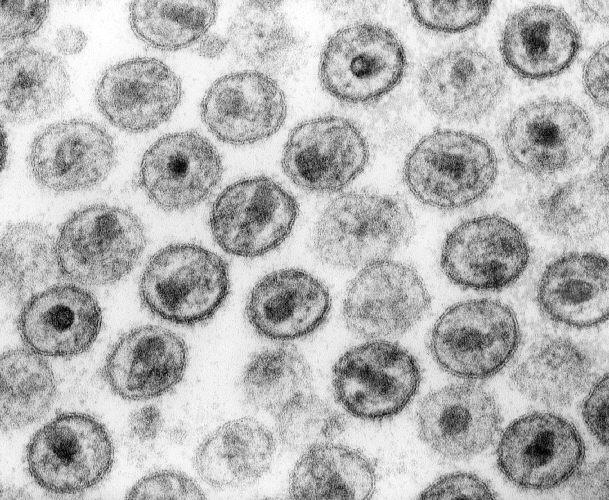
Figure 3: HIV virus viewed with Transmission Electron Microscope
Currently available antiretroviral drugs do not cure people of HIV infection or AIDS, however,
and they all have side effects that can be severe. AZT may cause a depletion of red or white blood cells,
especially when taken in the later stages of the disease. If the loss of blood cells is severe, treatment with
AZT must be stopped. DdI can cause an inflammation of the pancreas and painful nerve damage. The
most common side effects associated with protease inhibitors include nausea, diarrhea and other
gastrointestinal symptoms. In addition, protease inhibitors can interact with other drugs resulting in serious
side effects. Investigators also recently have reported cases of abnormal redistribution of body fat among
some individuals receiving protease inhibitors.
A number of drugs are available to help treat opportunistic infections to which people with HIV
are especially prone. These drugs include foscarnet and ganciclovir, used to treat cytomegalovirus eye
infections, fluconazole to treat yeast and other fungal infections, and TMP/SMX or pentamidine to treat
Pneumocystis carinii pneumonia (PCP).
In addition to antiretroviral therapy, adults with HIV whose CD4+ T-cell counts drop below 200
are given treatment to prevent the occurrence of PCP, which is one of the most common and deadly
opportunistic infections associated with HIV. Children are given PCP preventive therapy when their CD4+
T-cell counts drop to levels considered below normal for their age group. Regardless of their CD4+ T-cell
counts, HIV-infected children and adults who have survived an episode of PCP are given drugs for the rest
of their lives to prevent a recurrence of the pneumonia.
HARMACHEMICAL IRELAND
DIRECTOR MATT MORAN
onfederation House 84/86 Lower Baggot Street Dublin 2
ASSISTANT DIRECTOR MARIAN BYRON
SENIOR EXECUTIVE NESSA MOYLES
ELEPHONE + 353 1 605 1584 FAX + 353 1 638 1584
E-MAIL [email protected] www.pharmachemicalireland.ie
EDUCATION EXECUTIVE JAMES RING
TECHNICAL AFFAIRS EXECUTIVE AOIFE CLARKE
A business association within IBEC / the Irish Business and Employers Confederation SECRETARIAT AND EXECUTIVE SUPPORT ALANNA MCGUINNESS
HIV-infected individuals who develop Kaposi's sarcoma or other cancers are treated with radiation,
chemotherapy or injections of alpha interferon, a genetically engineered naturally occurring protein.
How do you prevent HIV?
Since no vaccine for HIV is available, the only way to prevent infection by the
virus is to avoid behaviours that put a person at risk of infection, such as sharing needles
and having unprotected sex.
Because many people infected with HIV have no symptoms, there is no way of knowing with
certainty whether a sexual partner is infected unless he or she has been repeatedly tested for the virus or has
not engaged in any risky behaviour. CDC recommends that people either abstain from sex or protect
themselves by using male latex condoms whenever having sex.
Although some laboratory evidence shows that spermicides can kill HIV organisms, in clinical
trials, researchers have not found that these products can prevent HIV.
The risk of HIV transmission from a pregnant woman to her foetus is significantly reduced if she
takes AZT during pregnancy, labour and delivery, and her baby takes it for the first six weeks of life.
HARMACHEMICAL IRELAND
DIRECTOR MATT MORAN
onfederation House 84/86 Lower Baggot Street Dublin 2
ASSISTANT DIRECTOR MARIAN BYRON
SENIOR EXECUTIVE NESSA MOYLES
ELEPHONE + 353 1 605 1584 FAX + 353 1 638 1584
E-MAIL [email protected] www.pharmachemicalireland.ie
EDUCATION EXECUTIVE JAMES RING
TECHNICAL AFFAIRS EXECUTIVE AOIFE CLARKE
A business association within IBEC / the Irish Business and Employers Confederation SECRETARIAT AND EXECUTIVE SUPPORT ALANNA MCGUINNESS
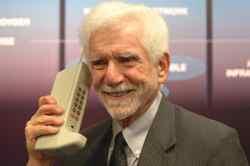
How Mobile Phones Work?
Who invented the mobile phone?
Most of us today could not imaging life without our mobile phones in our pockets of hand bags.
But believe it or not, there was a time not so long ago when there was no such thing and up to about 15
years ago that not many of the general public had them. And those who had them will tell you that they
were big awkward gadgets and not the small slim line items we have today. They were very plain and
nobody could have envisaged that features such as camera's and mp3 players would be included.
It was April 3, 1973. Richard Nixon was in power, Elton John was top of the pop charts and a bloke by the
name of Martin Cooper was about to make a phone call that would change the world. Cooper worked for
what was then a little-known company called Motorola and he had just developed the world's first "hand-
telephone''. The phone weighed almost two kilos - it was about the size of a brick. If that sounds
prehistoric, so too was the phone's power efficiency. The battery lasted somewhere between 10 and 20
minutes would be a moment of history.
Figure 4: Dr. Martin Cooper with the first ever mobile phone
The first [mobile] telephone cost millions of dollars to make. Ten years later they produced the
first commercial phones and those phones sold for US$4000, which would be closer to US$10,000 or
US$15,000 today. So the idea of having a billion and a half people having cell phones - some of which are
literally given to them for nothing - was a really long reach.
What are analog phones?
In 1983, the analog mobile phone standard called AMPS (Advanced Mobile Phone System) was approved
by the FCC and first used in Chicago. AMPS uses abetween 824 megahertz
HARMACHEMICAL IRELAND
DIRECTOR MATT MORAN
onfederation House 84/86 Lower Baggot Street Dublin 2
ASSISTANT DIRECTOR MARIAN BYRON
SENIOR EXECUTIVE NESSA MOYLES
ELEPHONE + 353 1 605 1584 FAX + 353 1 638 1584
E-MAIL [email protected] www.pharmachemicalireland.ie
EDUCATION EXECUTIVE JAMES RING
TECHNICAL AFFAIRS EXECUTIVE AOIFE CLARKE
A business association within IBEC / the Irish Business and Employers Confederation SECRETARIAT AND EXECUTIVE SUPPORT ALANNA MCGUINNESS
(MHz) and 894 MHz for analog cell phones. In order to encourage competition and keep prices low, the U.
S. government required the presence of two carriers in every market, known as A and B carriers. One of the
carriers was normally the local-exchange carrier (LEC), a fancy way of saying the local phone company.
Carriers A and B are each assigned 832 frequencies: 790 for voice and 42 for data. A pair of frequencies
(one for transmit and one for receive) is used to create one channel. The frequencies used in analog voice
channels are typically 30 kHz wide -- 30 kHz was chosen as the standard size because it gives you voice
quality comparable to
The transmit and receive frequencies of each voice channel are separated by 45 MHz to keep them from
interfering with each other. Each carrier has 395 voice channels, as well as 21 data channels to use for
housekeeping activities like registration and paging.
What are digital phones?
Digital mobile phones are the second generation (2G) of cellular technology. They use the same radio
technology as analog phones, but they use it in a different way. Analog systems do not fully utilize the
signal between the phone and the cellular network -- analog signals cannot be compressed and manipulated
as easily as a true digital signal. This is the reason why manycompanies are switching to digital -- so
they can fit more channels within a given bandwidth. It is amazing how much more efficient digital
Digital phones convert your voice intonformation (1s and 0s) and then compress it. This
compression allows between three and 10 digital cell-phone calls to occupy the space of a single analog
HARMACHEMICAL IRELAND
DIRECTOR MATT MORAN
onfederation House 84/86 Lower Baggot Street Dublin 2
ASSISTANT DIRECTOR MARIAN BYRON
SENIOR EXECUTIVE NESSA MOYLES
ELEPHONE + 353 1 605 1584 FAX + 353 1 638 1584
E-MAIL [email protected] www.pharmachemicalireland.ie
EDUCATION EXECUTIVE JAMES RING
TECHNICAL AFFAIRS EXECUTIVE AOIFE CLARKE
A business association within IBEC / the Irish Business and Employers Confederation SECRETARIAT AND EXECUTIVE SUPPORT ALANNA MCGUINNESS
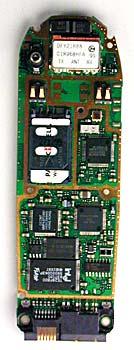
Figure 5: Circuit board of the mobile phone
Many digital cellular systems rely on frequency-shift keying (FSK) to send data back and forth over
AMPS. FSK uses two frequencies, one for 1s and the other for 0s, alternating rapidly between the two to
send digital information between the cell tower and the phone. Clever modulation and encoding schemes
are required to convert the analog information to digital, compress it and convert it back again while
maintaining an acceptable level of voice quality. All of this means that digital mobile phones have to
contain a lot of processing power.
What are mobile phone towers?
Mobile phone towers are large steel structures, which rise high into the skyline. This is a modern tower
with three different cell-phone providers riding on the same structure. If you look at the base of the tower,
you can see that each provider has its own equipment, and you can also see how little equipment is
involved today, older towers often have small buildings at the base. The box houses the radio transmitters
and receivers that let the tower communicate with the phones. The radios connect with the antennae on the
tower through a set of thick cables. If you look closely, you will see that the tower and all of the cables and
equipment at the base of the tower are heavily grounded. For example, the plate in this shot with the green
wires bolting onto it is a solid copper grounding plate.
HARMACHEMICAL IRELAND
DIRECTOR MATT MORAN
onfederation House 84/86 Lower Baggot Street Dublin 2
ASSISTANT DIRECTOR MARIAN BYRON
SENIOR EXECUTIVE NESSA MOYLES
ELEPHONE + 353 1 605 1584 FAX + 353 1 638 1584
E-MAIL [email protected] www.pharmachemicalireland.ie
EDUCATION EXECUTIVE JAMES RING
TECHNICAL AFFAIRS EXECUTIVE AOIFE CLARKE
A business association within IBEC / the Irish Business and Employers Confederation SECRETARIAT AND EXECUTIVE SUPPORT ALANNA MCGUINNESS
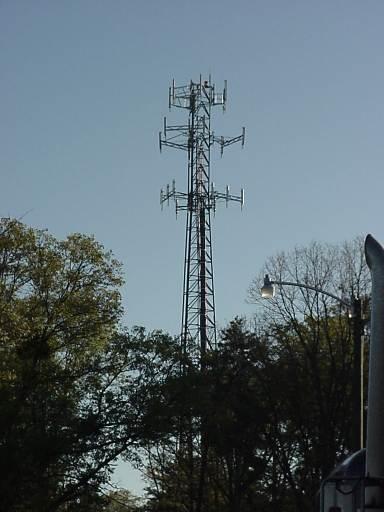
Figure 6: Mobile phone tower
What problems are associated with mobile phones?
A cell phone, like any other electronic device, has its problems:
Generally, non-repairable internal corrosion of parts results if you get the phone wet or use wet
hands to push the buttons. Consider a protective case. If the phone does get wet, be sure it is
totally dry before you switch it on so you can try to avoid damaging internal parts.
Extreme heat in a car can damage the battery or the cell-phone electronics. Extreme cold may
cause a momentary loss of the screen display.
Analog cell phones suffer from a problem known as "cloning." A phone is "cloned" when
someone steals its ID numbers and is able to make fraudulent calls on the owner's account.
Here is how cloning occurs: When your phone makes a call, it transmits the ESN and MIN to the network
at the beginning of the call. The MIN/ESN pair is a unique tag for your phone -- this is how the phone
company knows who to bill for the call. When your phone transmits its MIN/ESN pair, it is possible for
nefarious sorts to listen (with and capture the pair. With the right equipment, it is fairly easy to
HARMACHEMICAL IRELAND
DIRECTOR MATT MORAN
onfederation House 84/86 Lower Baggot Street Dublin 2
ASSISTANT DIRECTOR MARIAN BYRON
SENIOR EXECUTIVE NESSA MOYLES
ELEPHONE + 353 1 605 1584 FAX + 353 1 638 1584
E-MAIL [email protected] www.pharmachemicalireland.ie
EDUCATION EXECUTIVE JAMES RING
TECHNICAL AFFAIRS EXECUTIVE AOIFE CLARKE
A business association within IBEC / the Irish Business and Employers Confederation SECRETARIAT AND EXECUTIVE SUPPORT ALANNA MCGUINNESS
modify another phone so that it contains your MIN/ESN pair, which allows the nefarious individual to
make calls on your account.
Do mobile phones cause radiation?
Just by their basic operation, mobile phones have to emit a small amount of electromagnetic radiation.
Mobile phones emit signals via radio waves, which are comprised of radio-frequency (RF) energy, a form
of electromagnetic radiation. There's a lot of talk in the news these days about whether or not mobile
phones emit enough radiation to cause adverse health effects. The concern is that mobile phones are often
placed close to or against the head during use, which puts the radiation in direct contact with the tissue in
the head. There's evidence supporting both sides of the argument.
When talking on a mobile phone, a transmitter takes the sound of your voice and encodes it onto a
continuous sine wave. A sine wave is just a type of continuously varying wave that radiates out from the
antenna and fluctuates evenly through space. Sine waves are measured in terms of frequency, which is the
number of times a wave oscillates up and down per second. Once the encoded sound has been placed on the
sine wave, the transmitter sends the signal to the antenna, which then sends the signal out. Cell phones have
low-power transmitters in them. Most car phones have a transmitter power of 3 watts. A handheld mobile
phone operates on about 0.75 to 1 watt of power. The position of a transmitter inside a phone varies
depending on the manufacturer, but it is usually in close proximity to the phone's antenna. The radio waves
that send the encoded signal are made up of electromagnetic radiation propagated by the antenna. The
function of an antenna in any radio transmitter is to launch the radio waves into space; in the case of mobile
phones, these waves are picked up by a receiver in the mobile-phone tower.
Electromagnetic radiation is made up of waves of electric and magnetic energy moving at th
according to th(FCC). All electromagnetic energy falls
somewhere on the electromagnetic spectrum, which ranges from extremely low frequency (ELF) radiation
to X-rays and gamma rays. Later, you will learn how these levels ofaffect biological tissue.
When talking on a cell phone, most users place the phone against the head. In this position, there is a good
chance that some of the radiation will be absorbed by human tissue.
What are the potential health risks involved with their use?
HARMACHEMICAL IRELAND
DIRECTOR MATT MORAN
onfederation House 84/86 Lower Baggot Street Dublin 2
ASSISTANT DIRECTOR MARIAN BYRON
SENIOR EXECUTIVE NESSA MOYLES
ELEPHONE + 353 1 605 1584 FAX + 353 1 638 1584
E-MAIL [email protected] www.pharmachemicalireland.ie
EDUCATION EXECUTIVE JAMES RING
TECHNICAL AFFAIRS EXECUTIVE AOIFE CLARKE
A business association within IBEC / the Irish Business and Employers Confederation SECRETARIAT AND EXECUTIVE SUPPORT ALANNA MCGUINNESS
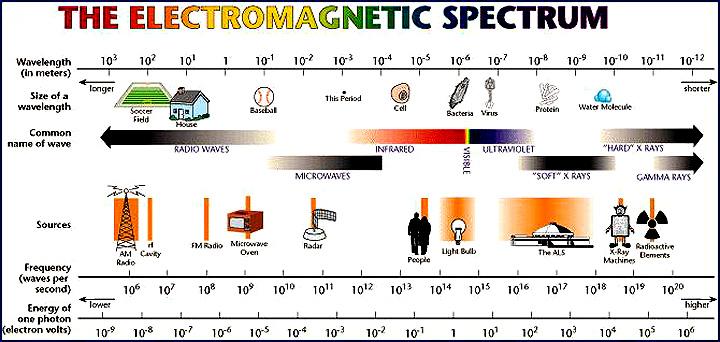
In the late 1970s, concerns were raised that magnetic fields fromwere causing leukaemia in
children. Subsequent epidemiological studies found no connection betweenand power lines. A more
recent health scare related to everyday technology is the potential for radiation damage caused by mobile
phones. Studies on the issue continue to contradict one another.
All mobile phones emit some amount of electromagnetic radiation. Given the close proximity of the phone
to the head, it is possible for the radiation to cause some sort of harm to the users. What is being debated in
the scientific and political arenas is just how much radiation is considered unsafe, and if there are any
potential long-term effects of mobile-phone radiation exposure.
Figure 7: The electro-magnetic spectrum
There are two types of electromagnetic radiation:
Ionizing radiation - This type of radiation contains enough electromagnetic energy to strip
atoms and molecules from the tissue and alter chemical reactions in the body. Gamma rays
andare two forms of ionizing radiation. We know they cause damage, which is why
we wear a lead vest when X-rays are taken of our bodies.
Non-ionizing radiation - Non-ionizing radiation is typically safe. It causes some heating effect,
but usually not enough to cause any type of long-term damage to tissue.
visibandradiation are considered non-ionizing.
HARMACHEMICAL IRELAND
DIRECTOR MATT MORAN
onfederation House 84/86 Lower Baggot Street Dublin 2
ASSISTANT DIRECTOR MARIAN BYRON
SENIOR EXECUTIVE NESSA MOYLES
ELEPHONE + 353 1 605 1584 FAX + 353 1 638 1584
E-MAIL [email protected] www.pharmachemicalireland.ie
EDUCATION EXECUTIVE JAMES RING
TECHNICAL AFFAIRS EXECUTIVE AOIFE CLARKE
A business association within IBEC / the Irish Business and Employers Confederation SECRETARIAT AND EXECUTIVE SUPPORT ALANNA MCGUINNESS
On its Web site, the FDA in the US states that "the available scientific evidence does not demonstrate any
adverse health effects associated with the use of mobile phones." However, that doesn't mean that the
potential for harm doesn't exist. Radiation can damage human tissue if it is exposed to high levels of RF
radiation, according to the FCC. RF radiation has the ability to heat human tissue, much like the way
hea Damage to tissue can be caused by exposure to RF radiation because the body
is not equipped to dissipate excessive amounts of heat. The eyes are particularly vulnerable due to the lack
offlow in that area.
Here are a few illnesses and ailments that have potential links to mobile-phone radiation:
Studies have only muddled the issue. As with most controversial topics, different studies have different
results. Some say that mobile phones are linked to higher occurrences of cancer and other ailments, while
other studies report that mobile-phone users have no higher rate of cancer than the population as a whole.
No study to date has provided conclusive evidence that cell phones can cause any of these illnesses.
However, there are ongoing studies that are examining the issue more closely. See that the end
of this article for more information on these studies.
At high levels, radio-frequency energy can rapidly heat biological tissue and cause damage such as burns,
according to a recent report from th(GAO), a nonpartisan congressional
agency that audits federal programs. The report went on to state that mobile phones operate at power levels
well below the point at which such heating effects would take place. The amount of radiation emitted from
the devices is actually minute, and the U.S. federal government places limits on how much radiation a
mobile phone can emit.
If you are worried about the potential hazards of mobile-phone radiation, here are few ways to reduce your
Use a hands-free headset.
Use a phone that places the antenna as far away from you as possible.
HARMACHEMICAL IRELAND
DIRECTOR MATT MORAN
onfederation House 84/86 Lower Baggot Street Dublin 2
ASSISTANT DIRECTOR MARIAN BYRON
SENIOR EXECUTIVE NESSA MOYLES
ELEPHONE + 353 1 605 1584 FAX + 353 1 638 1584
E-MAIL [email protected] www.pharmachemicalireland.ie
EDUCATION EXECUTIVE JAMES RING
TECHNICAL AFFAIRS EXECUTIVE AOIFE CLARKE
A business association within IBEC / the Irish Business and Employers Confederation SECRETARIAT AND EXECUTIVE SUPPORT ALANNA MCGUINNESS
Extend the antenna during use.
Limit calls inside buildings.
Use the phone in open spaces as often as possible.
Limit use by children.
The Greenhouse Effect?
What is the greenhouse effect?
The greenhouse effect is the rise in temperature that the Earth experiences because certain gases in the
atmosphere (water vapour, carbon dioxide, nitrous oxide, and methane, for example) trap energy from the
sun. Without these gases, heat would escape back into space and Earth's average temperature would be
about 60ºF colder. Because of how they warm our world, these gases are referred to as greenhouse gases.
HARMACHEMICAL IRELAND
DIRECTOR MATT MORAN
onfederation House 84/86 Lower Baggot Street Dublin 2
ASSISTANT DIRECTOR MARIAN BYRON
SENIOR EXECUTIVE NESSA MOYLES
ELEPHONE + 353 1 605 1584 FAX + 353 1 638 1584
E-MAIL [email protected] www.pharmachemicalireland.ie
EDUCATION EXECUTIVE JAMES RING
TECHNICAL AFFAIRS EXECUTIVE AOIFE CLARKE
A business association within IBEC / the Irish Business and Employers Confederation SECRETARIAT AND EXECUTIVE SUPPORT ALANNA MCGUINNESS
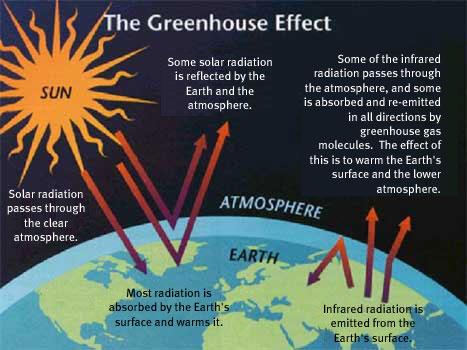
Figure 8: Diagram of the greenhouse effect
Most greenhouses look like a small glass house. Greenhouses are used to grow plants, especially in the
winter. Greenhouses work by trapping heat from the sun. The glass panels of the greenhouse let in light but
keep heat from escaping. This causes the greenhouse to heat up, much like the inside of a car parked in
sunlight, and keeps the plants warm enough to live in the winter.
The Earth's atmosphere is all around us. It is the air that we breathe. Greenhouse gases in the atmosphere
behave much like the glass panes in a greenhouse. Sunlight enters the Earth's atmosphere, passing through
the blanket of greenhouse gases. As it reaches the Earth's surface, land, water, and biosphere absorb the
sunlight's energy. Once absorbed, this energy is sent back into the atmosphere. Some of the energy passes
back into space, but much of it remains trapped in the atmosphere by the greenhouse gases, causing our
world to heat up.
What are the main causes of greenhouse gases?
While the greenhouse effect is an essential environmental prerequisite for life on Earth, there really can be
too much of a good thing.
The problems begin when human activities distort and accelerate the natural process by creating more
greenhouse gases in the atmosphere than are necessary to warm the planet to an ideal temperature.
HARMACHEMICAL IRELAND
DIRECTOR MATT MORAN
onfederation House 84/86 Lower Baggot Street Dublin 2
ASSISTANT DIRECTOR MARIAN BYRON
SENIOR EXECUTIVE NESSA MOYLES
ELEPHONE + 353 1 605 1584 FAX + 353 1 638 1584
E-MAIL [email protected] www.pharmachemicalireland.ie
EDUCATION EXECUTIVE JAMES RING
TECHNICAL AFFAIRS EXECUTIVE AOIFE CLARKE
A business association within IBEC / the Irish Business and Employers Confederation SECRETARIAT AND EXECUTIVE SUPPORT ALANNA MCGUINNESS

Burning natural gas, coal and oil —including gasoline for automobile engines—
raises the level of
carbon dioxide in the atmosphere.
Some farming practices and land-use changes increase the levels of methane and
Many factories produce long-lasting industrial gases that do not occur naturally,
significantly to the enhanced greenhouse effect and ―global warming‖
that is currently under way.
Figure 9: Factory releasing greenhouse gases
Deforestation also contributes to global warming. Trees use carbon dioxide and give
off oxygen in its
place, which helps to create the optimal balance of gases in the
atmosphere. As more forests are logged for
timber or cut down to make way for
farming, however, there are fewer trees to perform this critical function.
Population growth is another factor in global warming, because as more people use
fossil fuels for
heat, transportation and manufacturing the level of greenhouse gases
continues to increase. As more
farming occurs to feed millions of new people, more
greenhouse gases enter the atmosphere.
Ultimately, more greenhouse gases means more infrared radiation trapped and held, which gradually
increases the temperature of the Earth's surface and the air in the lower atmosphere.
What will happen if we don't stop producing the gases?
HARMACHEMICAL IRELAND
DIRECTOR MATT MORAN
onfederation House 84/86 Lower Baggot Street Dublin 2
ASSISTANT DIRECTOR MARIAN BYRON
SENIOR EXECUTIVE NESSA MOYLES
ELEPHONE + 353 1 605 1584 FAX + 353 1 638 1584
E-MAIL [email protected] www.pharmachemicalireland.ie
EDUCATION EXECUTIVE JAMES RING
TECHNICAL AFFAIRS EXECUTIVE AOIFE CLARKE
A business association within IBEC / the Irish Business and Employers Confederation SECRETARIAT AND EXECUTIVE SUPPORT ALANNA MCGUINNESS
Today, the increase in the Earth's temperature is increasing with unprecedented speed. To understand just
how quickly global warming is accelerating, consider this:
During the entire 20th century, the average global temperature increased by about 0.6 degrees Celsius
(slightly more than 1 degree Fahrenheit).
Figure 10: The North Pole
Using computer climate models, scientists estimate that by the year 2100 the average global temperature
will increase by 1.4 degrees to 5.8 degrees Celsius (approximately 2.5 degrees to 10.5 degrees Fahrenheit).
How can we reduce greenhouse gases?
Driving a car or using electricity is not wrong. We just have to be smart about it. Some people use less
energy by carpooling. For example, four people can ride together in one car instead of driving four cars to
work. Here are some additional ways you can help make the planet a better place!
Learning about the environment is very important. There are many good books that will help you learn. To
get started, ask a teacher or a librarian for some suggestions. You also can look at the Links page to find
other good web sites with information about the environment and climate change.
HARMACHEMICAL IRELAND
DIRECTOR MATT MORAN
onfederation House 84/86 Lower Baggot Street Dublin 2
ASSISTANT DIRECTOR MARIAN BYRON
SENIOR EXECUTIVE NESSA MOYLES
ELEPHONE + 353 1 605 1584 FAX + 353 1 638 1584
E-MAIL [email protected] www.pharmachemicalireland.ie
EDUCATION EXECUTIVE JAMES RING
TECHNICAL AFFAIRS EXECUTIVE AOIFE CLARKE
A business association within IBEC / the Irish Business and Employers Confederation SECRETARIAT AND EXECUTIVE SUPPORT ALANNA MCGUINNESS
Save Electricity
Whenever we use electricity, we help put greenhouse gases into the air. By turning off lights, the television,
and the computer when you are through with them, you can help a lot.
Bike, Bus, and Walk
You can save energy by sometimes taking the bus, riding a bike, or walking.
Talk to Your Family and Friends
Talk with your family and friends about climate change. Let them know what you've learned.
Plant Trees
Planting trees is fun and a great way to reduce greenhouse gases. Trees absorb carbon dioxide, a
greenhouse gas, from the air.
Recycle cans, bottles, plastic bags, and newspapers. When you recycle, you send less trash to the landfill
and you help save natural resources, like trees, oil, and elements such as aluminium.
When You Buy, Buy Cool Stuff
There are lots of ways we can improve the environment. One of the ways to reduce the amount of
greenhouse gases that we put into the air is to buy products that don't use as much energy. By conserving
energy, we help reduce climate change and make the Earth a better place. Some products – like certain cars
and stereos – are made specially to save energy.
HARMACHEMICAL IRELAND
DIRECTOR MATT MORAN
onfederation House 84/86 Lower Baggot Street Dublin 2
ASSISTANT DIRECTOR MARIAN BYRON
SENIOR EXECUTIVE NESSA MOYLES
ELEPHONE + 353 1 605 1584 FAX + 353 1 638 1584
E-MAIL [email protected] www.pharmachemicalireland.ie
EDUCATION EXECUTIVE JAMES RING
TECHNICAL AFFAIRS EXECUTIVE AOIFE CLARKE
A business association within IBEC / the Irish Business and Employers Confederation SECRETARIAT AND EXECUTIVE SUPPORT ALANNA MCGUINNESS
Source: http://www.thephysicsteacher.ie/Transition%20Year/Lisa%20Darley/So%20what%20Happens%20Vol%201.pdf
Elevated Serum Estradiol and Testosterone Concentrations Are Associated with a High Risk for Breast CancerJane A. Cauley, DrPH; Frances L. Lucas, PhD; Lewis H. Kuller, MD, DrPH; Katie Stone, PhD; Warren Browner, MD, MPH; and Steven R. Cummings, MD, for the Study of Osteoporotic Fractures Research Group Background: The relation between endogenous steroid
& 2014 International Society of Nephrology A multicenter randomized trial indicates initialprednisolone treatment for childhood nephroticsyndrome for two months is not inferior tosix-month treatmentNorishige Yoshikawa1, Koichi Nakanishi1, Mayumi Sako2, Mari S. Oba3, Rintaro Mori4, Erika Ota4,Kenji Ishikura5, Hiroshi Hataya5, Masataka Honda5, Shuichi Ito6, Yuko Shima1, Hiroshi Kaito7,Kandai Nozu7, Hidefumi Nakamura2, Takashi Igarashi8, Yasuo Ohashi9 and Kazumoto Iijima7; for theJapanese Study Group of Kidney Disease in Children10








